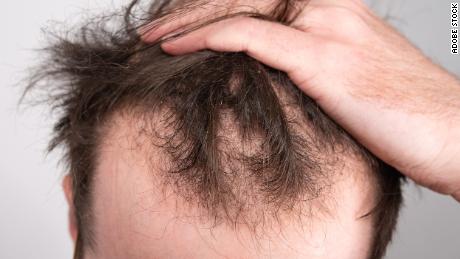- Kartaltepe Mahallesi İncirli Caddesi Limon Çiçeği Sokak No: 1 34145 Bakırköy İstanbul
- +90 541 548 52 47

Stem Cell Approach in Alopecia Treatment: What are the Current Situation and Predictions?
27/09/2022
First FDA-Approved Drug for Alopecia Areata
27/09/2022Hair loss is one of the most common cosmetic and aesthetic problems between men and women. It should be considered that the problem of hair loss, which exceeds the limits considered normal, often indicates a distressing situation. The critical threshold has been determined by experts to be 100 to 150 wires. The thinning of the scalp is often not noticed until 50% of the hair is shed. Although it is not possible to count the hair loss one by one, we can follow the clues that will help us to notice the hair loss problem at an early stage. As I mentioned in my previous articles; How the hair looks when wet, the position of the hairline, the appearance of the hair strands, the accumulations of hair on the brush during combing, pillowcases can give us an idea about the severity of the hair loss problem. But making a diagnosis is the job of experts. You can read what awaits you when you apply to a specialist with a complaint of hair loss and what methods are used in the diagnosis of hair loss in the continuation of our article.
Which Controls Are Performed During the Clinical Consultation?
– Oral Consultation
Hair loss problem; It may be caused by medical, genetic or external factors. First of all, it has to be determined. In the first doctor meeting, the patient’s medical history, that is, his general health history, is listened. Chronic diseases, regularly used drugs, surgical history are discussed during the oral consultation.
-Physical consultation
At this stage, a general scalp consultation is performed. The pattern of hair loss, the general density of the hair, the position of the anterior hairline, other body surface hairs are analyzed. In the general scalp consultation, it is also investigated whether there are problems such as erythema, hypopigmentation, pustules and crusting.
– Blood Tests
Hair loss treatment requires a multidisciplinary approach. There can be many different health problems that trigger spills. Hormone irregularities, thyroid function disorders, diabetes, the presence of diseases related to the immune system are some of the health problems known to cause hair loss. In addition, the lack of some vitamins and minerals in our body can cause hair loss. Blood tests are essential to detect all these deficiencies and possible diseases.
– Hair Pull Test
Hair pull tests determine the strength, durability and shedding level of the hair strands. This simple test, which can be applied practically during the physical consultation, is applied by pulling the hair strands to a certain extent without being battered. As a result of the hair pulling test performed with groups of approximately 50 or 60 hair strands, it is determined whether there is an active hair loss problem according to the number of palpable strands.
– Card Test
The card test, which gives clues about the health of existing hair and growing hair, is applied to distinguish new hair strands from broken strands. To give contrast to dark and light hair; This test, which is carried out with an 8*12 cm card in white on one side and black on the other, is used to examine the tips of newly emerging hairs.
– Scalp Biopsy
In some cases where physical consultations and hair analyzes are not considered sufficient, scalp biopsy method may also be applied to investigate the presence of scalp diseases that may cause hair loss.
– Trichoscopy
Trichoscopy is one of the methods that helps in Alopecia research and diagnosis. It is also called hair or scalp dermoscopy. It is a differential in vivo diagnosis method used in the diagnosis of hair diseases. It is effective in the diagnosis of early stage androgenetic alopecia.
What Information Is Collected by the Methods Used in the Diagnosis of Hair Loss?
– The patient’s general health history
– Duration of hair loss (Acute / Chronic)
– Hair volume
– Hair loss pattern (common/localized)
– Associated symptoms (Burning, itching, etc.)
Evaluation of a patient with hair loss problem; It requires a systematic approach such as listening to the general health history, performing clinical consultations, performing laboratory tests, and performing scalp biopsy when necessary. The data obtained as a result of comprehensive research and analysis of symptoms are extremely important for an accurate diagnosis and planning of an effective treatment procedure.




